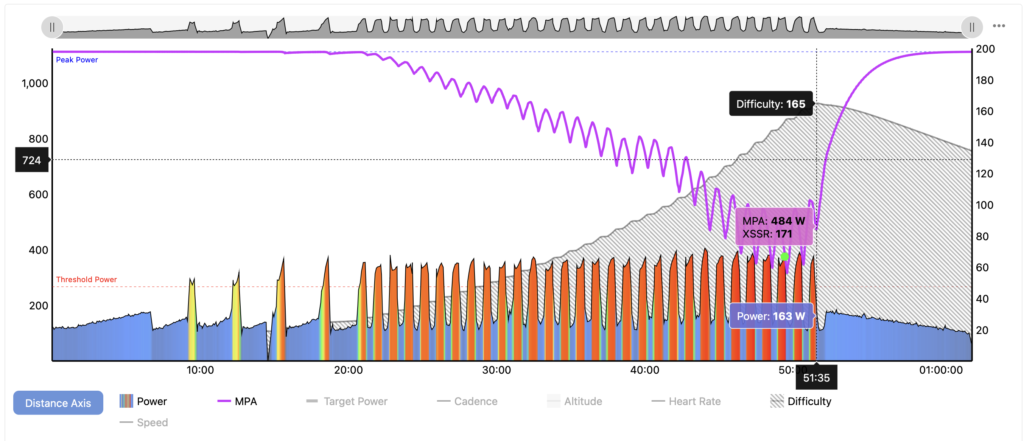Difficulty score (DS) provides a measure of how much strain has accumulated over the course of an activity or workout. Rather than using simple power averages or weighted power averages, difficulty score establishes the impact of repetition and constant, higher-intensity efforts are to perform for the athlete based on their unique fitness signature. Difficulty score is calculated as an exponentially weighted moving average of XSS Rate; it is not influenced by the duration of your ride.
Difficulty score aims to capture and quantifies the effects of repeated and/or sustained hard efforts and is shown in activity charts and workouts. The highest difficulty score reached in an activity/workout determines the Difficulty Rating. Reaching higher levels of difficulty corresponds with increasing athletic hardness and is a marker of elite athletic ability.

Intervals that take you to failure, like those in the SMART – Test Your Might workout will drive DS up rather quickly! Note that Difficulty Score on the MPA chart maxes out at 200. If you are achieving > 200 DS in your rides, it’s likely your fitness signature is underestimated. It could be time to push yourself for a Breakthrough!
Consider this metric to improve your pacing and strategy during group rides, races and time-trials by looking to prevent increasing the difficulty unnecessarily. One can compare the trade-offs in improved results with the challenge of meeting the higher levels of difficulty that will need to be endured.
Xert also uses DS when recommending workouts so that your workouts are never too hard! For more on that, check out our blog post, here.
